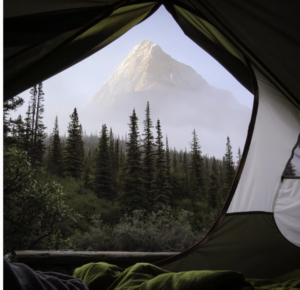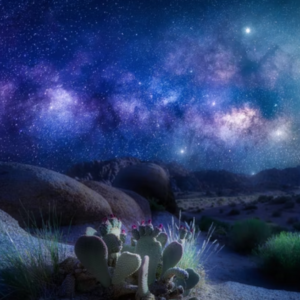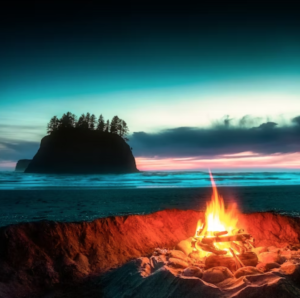To recap where we’ve come from and why this blog series exists - a brief history review and my own thoughts on why NFTs matter:
The Industrial Revolution enabled an increased scale in human organization that facilitated specialization and coordination. Groups of people were brought together in production processes, leading to the rise of commerce and infrastructure types previously hard to imagine. A process ongoing for the last several hundred years, it can be fairly argued that we’re now experiencing a new phase of Industrial Revolution, one that will shape the World in ways we do not yet fully understand.
The first infrastructure developed during the Industrial Revolution was transportation - roads, canals, rail, air - for the movement of people and goods. The second infrastructure developed was energy utilities - oil, pipelines, gas, electricity - for the transmission of power. The third infrastructure has been telecommunications - radio, tv, satellite, Internet - but to what end? Digital Identity. Yielding authority, influence, sovereignty and community, an individual’s digital Identity now has real value, and that digital Identity is best expressed by NFT.
Essential for establishing Identity and authority, NFTs look to be the most likely candidate for spurring increased scale in human organization and bringing together groups of people in the production process. In the space where blockchain meets NFTs we should begin to see new kinds of stores, new habits of time, new work processes, new forms of communication, new kinds of commerce, new ideologies, new forms of play and leisure, new communities. NFTs are the latest versions of the Industrial Revolution’s essentials - technology plus organization.
But what does NFT utility and adoption look like in five years? Ten years? Does NFT utility even matter? Who are the winners in the end? We’ve entered a creativity-based culture, so let’s talk to the creators! With so many unknowns in this new phase of Industrial Revolution, I’ve taken it upon myself to dig into the minds and projects of important NFT creators and crypto artists. My first goal in doing so is to better clarify to new and potential collectors what the NFT market looks like right now in order to set a benchmark for future comparisons. Next, in dedicating each blog post in this series to a single artist, I’m hoping to bring eyeballs and engagement to the artist interviewed. These are the interviews in the series so far:
- Chatting With The RektGuy
- The Brand & Business of Guido Di Salle
- The Brand & Business of TylersJourney
- The Brand & Business of Gabriella Morton
- The Brand & Business of Neil Burnell
- The Brand & Business of Dave Krugman
- The Brand & Business of DarkMarkArt
- A Chat With The Regulars
- The Brand & Business of Patrick Amadon
- A Chat With @spz7dsn_graphic of BrickBeads
- The Brand & Business of Cath Simard
- A Brief Chat with Mehdi Nazeri
The Brand & Business of Steve Walasavage
Today I’m chatting with “Lenslinger, Creator, and Traveler” Steve Walasavage, a US-based landscape and adventure photographer whose work has been described as vibrant, realistic, and creating a “fantastically rich and colorful experience.” By sharing the story of his amazing journeys through his art, Steve transports his viewers to some of the most isolated places on the Planet.
Let’s get to that Q&A!
What makes a good NFT experience?
Speaking from a creator and collector point of view, the two things I think make a great NFT experience are clarity and intention. By clarity, I mean a clear understanding of what the NFT artwork entails: the digital file itself, the metadata/description/properties, the implied utility if it exists. I like knowing what I'm getting, and I like providing similar clarity for all the photographic pieces I sell.
By intention, I'll refer to my own definition of Art: Art is a simple machine for moving emotions. Any piece of art (or really, any human-made work, including architecture, code, culinary creations, etc...) that causes a change in emotion, for better or worse, I would consider art. And for the NFT experience, I enjoy knowing that there was some intention behind that process. Not every photo NFT needs a story, but every great NFT experience needs intention.
What exactly is NFT Photography?
The phrase "NFT Photography" has already been plenty controversial, even in the mere year and a half it's had in the limelight. To some, photography is on a pedestal, and adding NFT in front sullies its name. To others, NFT Photography is its own new genre. I'm no purist, and I understand that language changes as fields mature.
To me, NFT Photography applies to anyone selling their photography as NFTs in any capacity (whether they created the photos with the intent to sell them in this form or not), and I’d argue that "NFT photography" *is* its own new form of photography! We just haven't seen its final form yet. Once cameras have built-in blockchain and timestamp functionality, things will get a lot more interesting. In the meantime, I'm doing my part to educate people new to NFTs about their potential, including but not limited photography.
Why is the NFT market important for photography?
I think the biggest answer here is that for photographers, the combination of "audience reach" and "ease of transactions" has never really been there. Of course, web2 was a boon for many, with tutorials, print sales, digital sales, etc. But NFTs have the potential to take this combination to the next level (and many would argue they already have).
In addition, I think the concepts of provenance, royalties, and full integration with what I see as obviously the future of money are the key benefits of NFT technology to photography. It's important to be able to prove you're the original creator, to track ownership of items, to receive royalties for secondary sales (days, months, years later!), and to be part of the cryptocurrency revolution in these early days. All of these capabilities are still in their infancy and have a way to go, but they're great for photography at large.
What’s your most significant photography achievement?
I'd have to say my most personally significant achievement is somehow tapping into human nature's "virality" aspect and getting a couple of my images to the front page of Reddit. Sales and compliments from Grandma are great, but once you've got random Internet strangers upvoting and/or tearing apart your photo and making derivatives, you know you've got it made.
Why does your photography have value?
I think all photography has value. Every single image is a unique viewpoint in the grand scheme of things; personal impressions may differ, but that doesn't change this underlying fact. My photography has value because it provides glimpses into far-off places and the distant past. I go out of my way to find those fantastic spots and angles, and create those images that dazzle the eye. Scarcity applies to things like apples and gold bars, but when it comes to art? The fires of creativity never cease.
How do you determine your NFT floor price?
Floor price is a touchy subject, with me. As I said earlier, my goal is for my photography to be accessible to *everyone*, and I keep my prices in line with that philosophy. Every photo is different, so why should there be some baseline price point that defines them all? Some images took months to plan and execute perfectly; others were quick snapshots when I happened to get lucky with weather or animals. Some are personally meaningful to me, and some might be more meaningful to others viewing them. All this is to say, I don't have a floor price, and I am constantly trying to offer a variety of high quality images at a variety of price points, to ensure my work ends up in the right hands as often as possible.
How do you determine what kind of collection to offer? Deciding on Editions vs. Standalones vs. Collections?
I'm not immune to the ebbs and flows of NFT trends, of course. 1/1's, to editions, to collections, to editions, and back to 1/1's... It's been a wild 18 months. In general, I try to keep my collections to a very close and cohesive theme; for example, mountains, or Fall, or California. My editions are where I try out my more experimental ideas to see what sticks; the lower price point encourages more people to add them to their own galleries. I save my best images to be my 1/1 pieces.
How much do you typically make per NFT sale? Is your business sustainable from NFT sales alone?
At the moment, in this bear market, I'd estimate my average NFT sale is somewhere around 0.05 ETH per image (this includes edition sales). Things are slow for everyone, but I feel fortunate to have a dedicated following and occasional repeat buyers. In terms of sustainability, I don't think I'd be able to get buy on NFT sales alone yet. Ask me again in a couple years!
Were you, as a photographer, already well-established before entering into the world of NFTs? Did you already have crypto experience?
I'd say I was fairly established elsewhere, with a large following on Instagram and plenty of sales under my belt at that point. The thing is, a huge following doesn't directly translate into success in NFTS; at least, not always. As for crypto, yes, I had a bit of experience, but the past year has ballooned that knowledge exponentially out of necessity!
At what point did you decide to jump into NFTs?
Around December of 2020, I started reading about photography as a possible use case for NFTs. Back then, as far as I know, there wasn't much photography on the blockchain. Fast forward a couple months, when I finally got around to at least minting something (it was a hand-drawn artwork, still available to avid collectors who want to dig around...). April 2021 was my first NFT photography mint, and since then I've been hooked.
What’s your view on the NFT market right now?
I'm just a fly on the wall here. I think it's fascinating that there's literally billions of dollars flowing through here every day, through this technology that's clearly nascent and constantly changing, and that some of that money is changing artists' lives (and career trajectories). The fact that this industry is all organic and seemingly without any real direction could be argued to be either a really good thing, or a really terrifying thing.
What does the NFT market look like in 5 years? Where do you see the innovation?
In 5 years, I see (and hope!) mainstream adoption charging forward, full steam ahead! Clearly, advances in AR and VR technology will help with this, as well as change the landscape of NFTs. Virtual worlds, galleries, etc. will be much more full-featured and less "clunky". As for NFT art? Collaborations and multimedia NFTs will be the norm, not the exception.
We're all striving to create something new, and I think the natural way of things is for the more and more advanced and thoughtful work to rise to the top. Oh, and music! NFTs will be *the* place that music is bought, sold, listened to, and shared. I'm surprised it isn't already; maybe it's a technology bottleneck.
What does NFT photography market look like in 5 years?
The NFT photography market specifically, I think, will move toward everybody from expert to beginner having custom contracts, right from the start. We'll move away from all these "decentralized" gated platforms, and toward individual websites that offer sales and minting functionality. Photos themselves will be minted on demand, which I think makes more sense than the backwards model we have right now. Why mint something without knowing there's a buyer? Instead, offer buyers the chance to see things and *then* mint them.
I think editions will be a big way forward for most non-big-name photographers; we'll all settle into a more standardized, collectible framework for those. It'll be like collecting baseball cards. Fun! I also think videos and animations are the future of NFT photography.
What comes next for you? Do you have a roadmap?
I don't have a roadmap, though I do have a general plan. I'd say my NFT photography career is still in the building phase, getting my name and work out there, and making connections. That said, I'm always looking for new ways to use existing and new technology to bring my photographic work to life.
Here's the deal; my goal is for my photographic work to be hanging on the virtual walls of everyone's metaverse living room in the next ten years. I want my images to delight the holder and impress the people who view it. I want these shots to be the cosmic background radiation of your photography appreciating experience, both in NFTs and IRL. These are my goals, and I'm working daily to achieve them.
I think that the vast variety of our world translates to an equally vast variety of viewer and collector tastes, and there's something for everyone in my art. I want my pieces to hang on everyone’s cyber gallery walls!
S.W.O.T ANALYSIS of your business! Strengths? Weaknesses? Opportunities? Threats?
- Strengths:
-
-
- Wide variety in existing portfolio
- Tech background -> exploring new creative possibilities
- Existing follower base
-
- Weaknesses:
-
-
- Lack of formal business training
- Limited travel mobility (due to home location)
-
- Opportunities:
-
-
- Still thousands of images to show the world!
- Into NFTs relatively early -> OG status
-
- Threats:
-
- None. The world is my oyster!
In closing …
I’d like to close with all the important DYOR links I could find on Steve as well as some of my favorite pieces from his Foundation.
DYOR Links:
- Twitter - https://twitter.com/walasavagephoto
- Instagram - https://www.instagram.com/walasavagephoto/
- Facebook - https://www.facebook.com/walasavagephoto
- Foundation - https://foundation.app/@walasavagephoto
- MakersPlace - https://makersplace.com/walasavagephoto/
- KnownOrigin - https://knownorigin.io/gallery/573400-earth
- Portion - https://portion.io/nft?ID=QmSHgMtT1veVsnuXYYTqD195bSzvVNhrnK4pwQjG9mjaCd&chainID=1
- Opensea -
- Tree Rings - https://opensea.io/collection/tree-rings?search[sortAscending]=true&search[sortBy]=CREATED_DATE
- Peaks - https://opensea.io/collection/peaks-the-mountain-collection-1?search[sortAscending]=true&search[sortBy]=CREATED_DATE
- Stay Golden - https://opensea.io/collection/stay-golden-fall-collection?search[sortAscending]=true&search[sortBy]=CREATED_DATE
- Norway Up High - https://opensea.io/collection/norway-up-high?search[sortAscending]=true&search[sortBy]=CREATED_DATE
- Slow Fade - https://opensea.io/assets/ethereum/0x61db92d6349cd56d8accd059fd1c12a6bd60fcb2/1
- Soulset - https://opensea.io/assets/ethereum/0x495f947276749ce646f68ac8c248420045cb7b5e/9566349108743429006839101100921653396136012468553527091874592476632916688946



Great interview with relative questions! great work here!